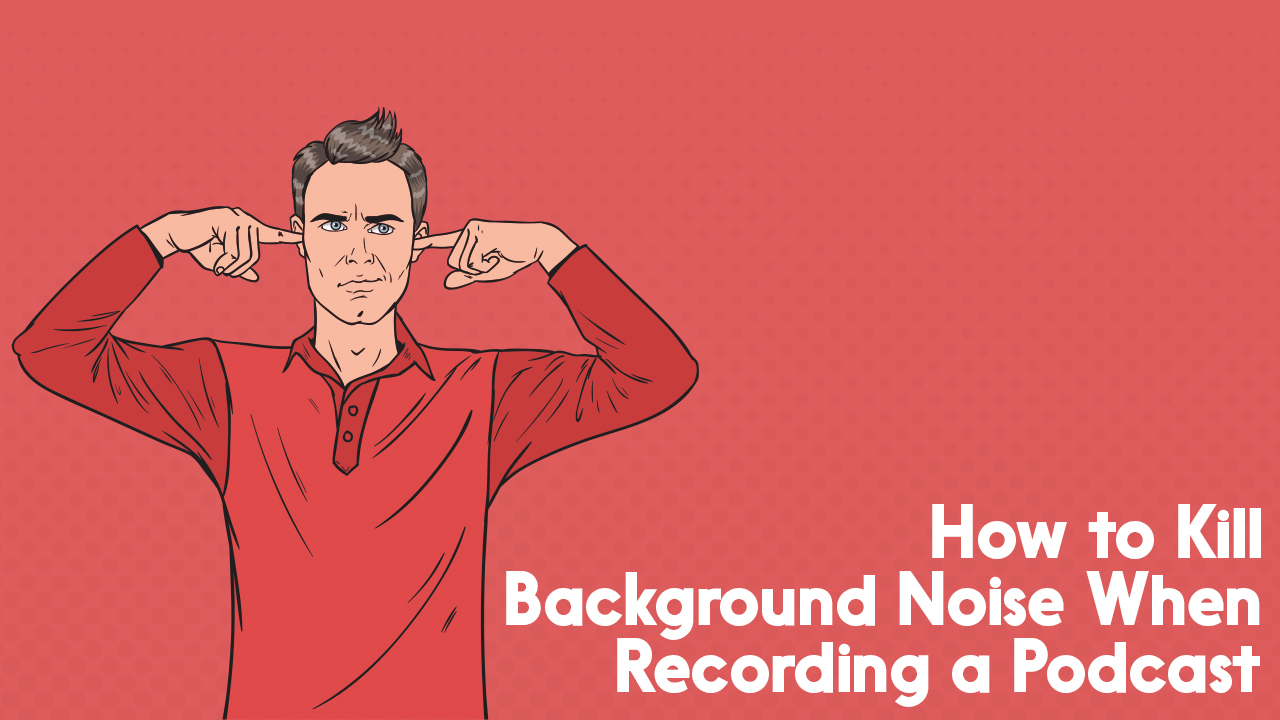“How do I prevent background noise in my podcast?” This is a pretty age-old question. In recent years we’ve seen tremendous advancements in podcast tech, from equipment to software, from hosting service offerings to ways to monetize. But one thing that’s never changed for podcasters is the struggle to combat background noise.
When recording a podcast at home, background noise like passing traffic can be a big problem. That’s before we start looking at all the potential unwanted noises inside your house, too. Let’s face it, if sound control was easy, why would we need hi-tech recording studios?
At the end of the day, short of the aforementioned podcast studio, it’s very difficult to get rid of background noise altogether. But, here are some steps that can help to reduce, if not eliminate, non-constant background noise in your podcasts.
1. Choose a Dynamic Mic in Non-Studio Podcasting
Dynamic microphones tend to pick up a narrower range of sounds, both frequency and amplitude. This means it’ll pick up fewer sounds from far away and less of the annoying, non-voice frequency audio.
Here’s a deeper look at what makes Dynamic mics different from their Condenser alternatives.
A Dynamic microphone like the ever-popular Shure SM58 has a heart-shaped pickup pattern. That means it’ll be much more responsive to you in front of the mic, as opposed to anything going on behind it.
There are a few great USB-XLR dynamic mic options out there. These mics can be used directly into your computer, or via a mixer, digital recorder, or audio interface. Mics like the Samson Q2U and the ATR2100 are very affordable, whilst the new Shure MV7 is marketed as offering “perfect recordings for imperfect rooms”.
Sound Treatment & Podcast Background Noise
Most sound treatment options on the market are designed to combat echo and reverb, as opposed to blocking out the sound of a phone ringing. With that said, the more absorption you can get between your mic and the source of any noise, the better. Sound blankets can be a great way of building an extra layer of protection into your recordings. Acoustic treatment won’t kill podcast background noise, but they will help.

Get Close and Cosy with your Mic
If you’re close, then you’re also loud. This means you’re much louder than the surrounding sounds and so you drown them out pretty effectively.
If you’re quiet, then you’ll have to boost yourself up a bit in the production and editing phase. With that comes the background noise. So, get close, record loud and make sure you’re creating a big volume gap between you and that traffic.
Here’s how to set your levels for recording a podcast, as well as our guide to mic technique. These will help you to record the best possible source material, and that’ll go a long way to helping you eliminate podcast background noise.
Go All-Out and Create a Mock Studio
Many podcasters think that to “create a studio” they need to annex an entire room. The family and pets are sent packing to the kitchen, whilst the living room is converted into a recording space big enough to record the next Live Aid effort in.
Here’s the secret though, you don’t need to turn an entire room into a studio. You only need to build a localised recording space around you and your mic. This can be done with everyday household items such as duvets, drapes, or towels. It doesn’t need to look amazing if you’re working purely in audio – it just needs to be practical and comfortable.
On that last point, you obviously need a setup that’s pleasant to use. Being too warm or too cramped won’t lead to very enthusiastic content. Check out our guide on how to create a silent home studio for a deeper dive into all of this.
Extra Protection Against Podcast Background Noise
This is essentially recreating some of the effects you get with double glazing, except with the vacuum of course. But it still has a big effect, although is a fair bit of effort.
For some, the best solution is actually to take your mic and your recorder and head to your wardrobe. This is similar to the duvet, but might be a little more sustainable.
Getting in amongst all of your hanging clothes can have a big effect on your recordings – they’ll dampen out tonnes of the background noise, and create a nice silent bed for your voice.
Plug the Gaps
Double glazing was mentioned above, and it does have a big effect on background noise within a house. But if you don’t have that, then you can at least keep out some of the noise by fitting rubber or foam seals to windows and doors.
This will help to control the airflow into your house and keep a bit of the noise out with it.
Podcast Background Noise: If All Else Fails…
Did everything you possibly could to keep background noise out of your podcast? Yet you can still hear the sounds of passing cars, air-con units, and the neighbour’s television?
Do Your Listeners Really Care?
First up, you’d be surprised at how many podcast listeners don’t even notice, let alone mind. Most consumers listen on cheap earbuds and in busy environments, such as busses or trains. If they ever do happen to notice the odd bit of background noise in your podcast, they’re unlikely to take offence at it. Fans of your show will know that you don’t have access to a top of the range studio, and are doing your best with your own resources. Above anything else, they’ll appreciate the content you’re putting out – that’s why they’re listening, after all.
Try Some Music
If you’re a perfectionist though, then why not try adding some gentle background noise to segments of your show? Music can help mask background noise, and it can add in that extra layer of professionalism too. Here’s where to find music for your podcast that’s safe and legal to use.

‘Noise Reduction’ Options
Finally, if the background noise in your podcast is more constant than intermittent (eg; the steady drone of traffic), it might be possible to use a process called ‘Noise Reduction’ (the clue is in the name!) to strip most of it out. You can access Noise Reduction in editing software such as Audacity. Alternatively, you can use a Podcast-Maker tool like Alitu which will do it for you automatically (along with the volume levelling, processing, and publishing!).
You can even record your podcast with Alitu (either solo shows or online calls), so combine it with an affordable dynamic mic and some cheap sound treatment and you’ll be well on your way to winning the war against background noise!
